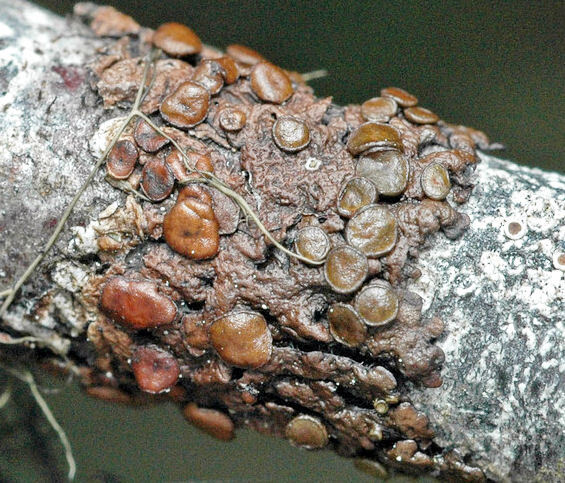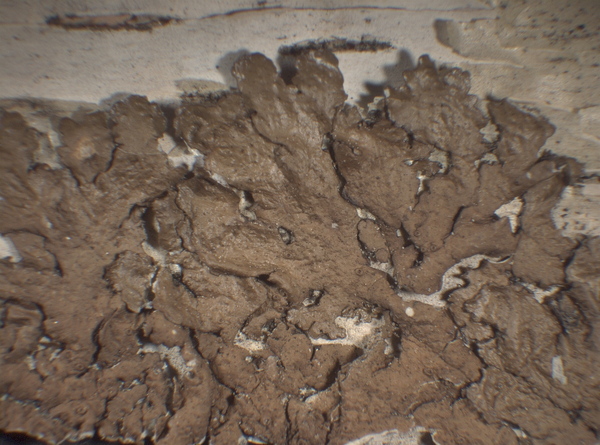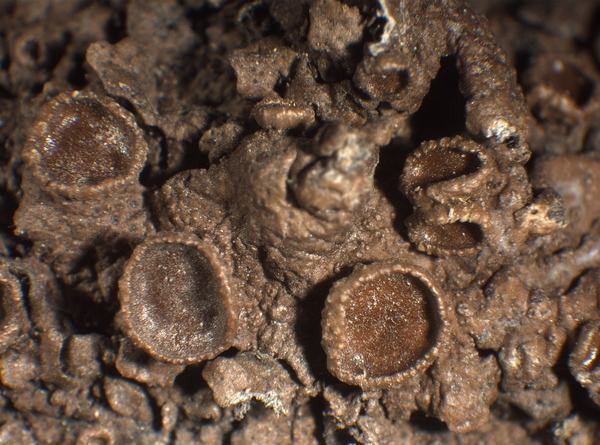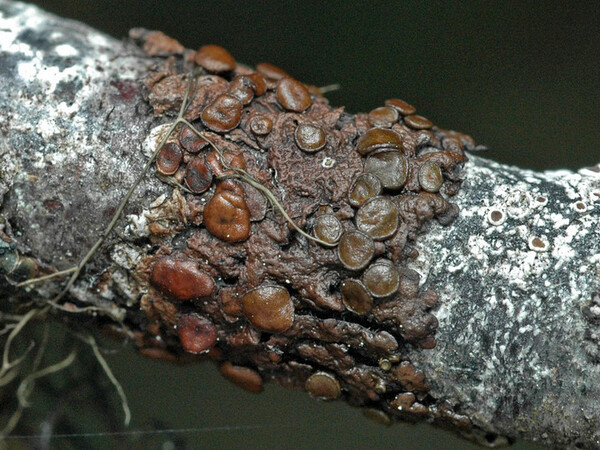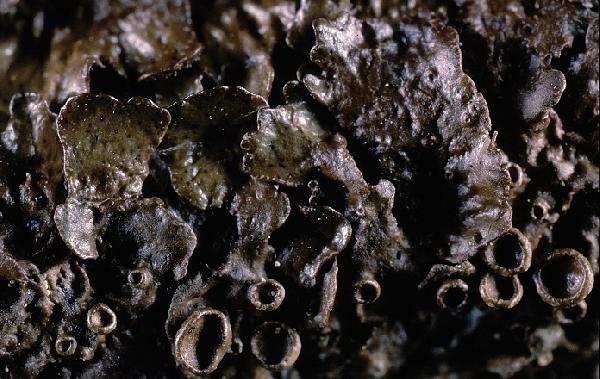Melanohalea septentrionalis (Lynge) O. Blanco, A. Crespo, Divakar, Essl., D. Hawksw. & Lumbsch
Mycol. Res., 108, 8: 883, 2004. Basionym: Parmelia olivacea var. septentrionalis Lynge - Bergens Mus. Årbok, 10: 4, 1912
Synonyms: Parmelia septentrionalis (Lynge) Ahti
Distribution:
Description: Thallus foliose, heteromerous, dorsiventral, brown, olive-brown or dark brown in sun-forms, usually smooth and glossy, moderately to loosely adnate, with obscure to distinctive, elongate to irregular, marginal pseudocyphellae. Lobes up to 4 mm wide, irregularly shaped, flat to slightly convex, the margins often swollen and more or less eroded; lower surface dark brown, with sparse, dark rhizines. Upper cortex paraplectenchymatous, with a non-pored epicortex, the cell walls containing isolichenan; medulla white; lower cortex paraplectenchymatous. Apothecia lecanorine, usually numerous, crowded in central parts and often reaching the periphery of the thallus, up to 5 mm across, with a brown disc and a smooth to slightly crenulate, pseudocyphellate margin. Epithecium brown; hymenium colourless, (40-) 50-70 (-90) μm high; subhymenium 10-25 μm high; hypothecium colourless. Asci 8-spored, clavate, thick-walled, the apex I+ blue with a wide, divergent axial body, Lecanora-type. Ascospores 1-celled, hyaline, ovoid to oblong or ellipsoid, (8-)10-12 (-13) x (5-) 7-9 μm. Pycnidia frequent, black. Conidia more or less dumbbell-shaped, 5-7 x c. 1 μm. Photobiont chlorococcoid. Spot tests: upper cortex K-, C-, KC-, P-; medulla K- or rarely K+ yellow, C-, KC-, P+ orange or rarely P-. Chemistry: fumarprotocetraric acid (major), protocetraric acid (traces), confumarprotocetraric acid (traces); rarely without lichen substances. Note: on the bark of various trees (mostly Alnus, Salix and Betula), usually on the branches; widespread in the Holarctic region, more common in Scandinavia; in Central Europe it occurs in the montane to alpine belts, mostly in raised bogs, rarely on dwarf shrubs above treeline, with a few records from the Eastern Alps (Austria). To be looked for in Italy
Growth form: Foliose
Substrata: bark
Photobiont: green algae other than Trentepohlia
Reproductive strategy: mainly sexual
Commonnes-rarity: (info)
Alpine belt: absent
Subalpine belt: absent
Oromediterranean belt: absent
Montane belt: absent
Submediterranean belt: absent
Padanian area: absent
Humid submediterranean belt: absent
Humid mediterranean belt: absent
Dry mediterranean belt: absent
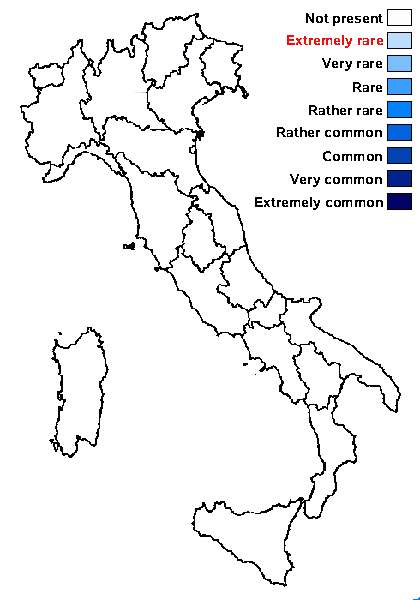
Predictive model
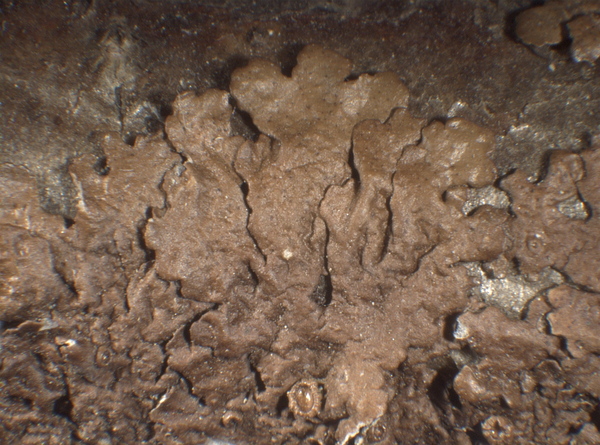

E. Pittao; Owner: Department of Life Sciences, University of Trieste
Herbarium: TSB (29397)
2008.04.01
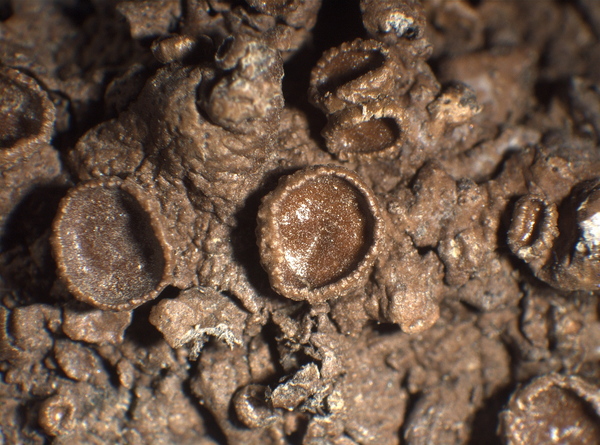

E. Pittao; Owner: Department of Life Sciences, University of Trieste
Herbarium: TSB (29397)
2008.04.01
Growth form: Foliose
Substrata: bark
Photobiont: green algae other than Trentepohlia
Reproductive strategy: mainly sexual
Commonnes-rarity: (info)
Alpine belt: absent
Subalpine belt: absent
Oromediterranean belt: absent
Montane belt: absent
Submediterranean belt: absent
Padanian area: absent
Humid submediterranean belt: absent
Humid mediterranean belt: absent
Dry mediterranean belt: absent

Predictive model


E. Pittao; Owner: Department of Life Sciences, University of Trieste
Herbarium: TSB (29397)
2008.04.01


 Index Fungorum
Index Fungorum
 GBIF
GBIF
